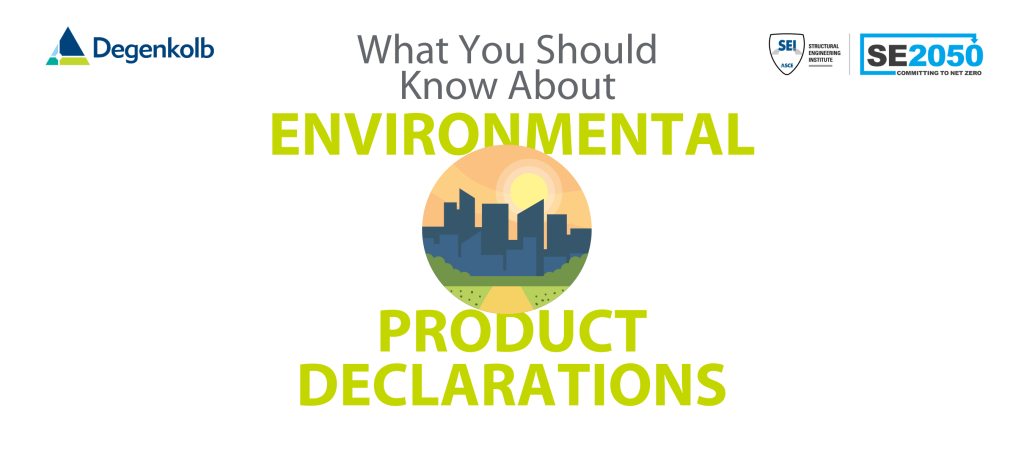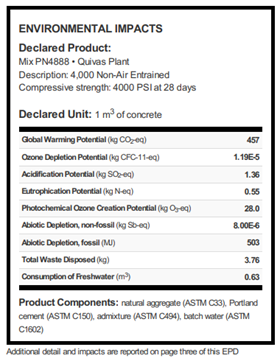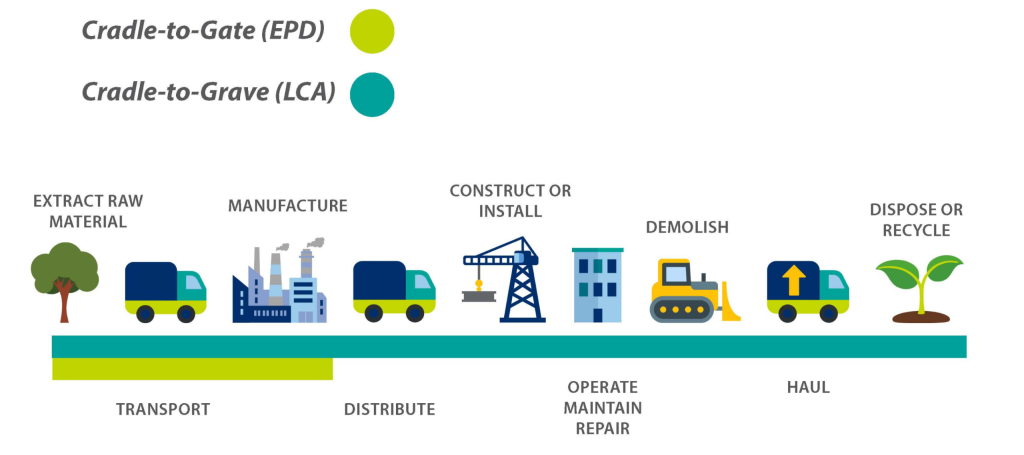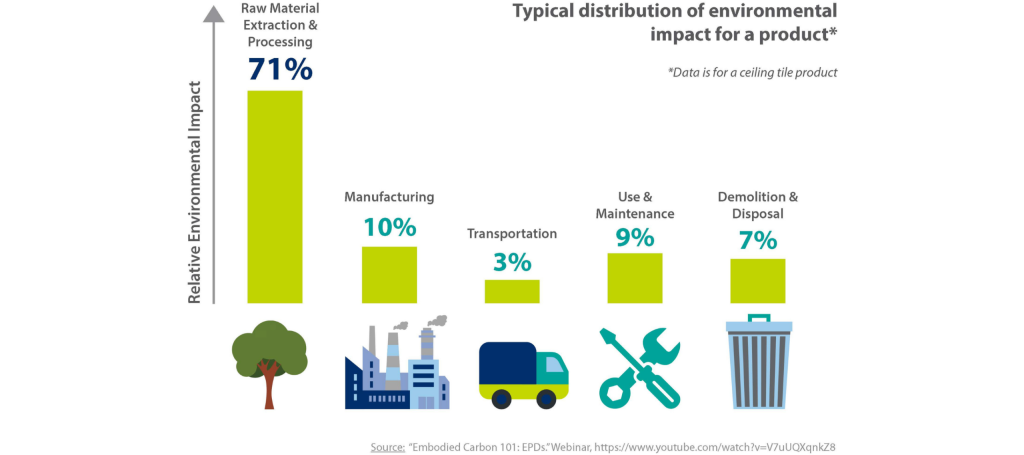What You Should Know About Environmental Product Declarations
Check out other updates about Degenkolb and the SE 2050 Commitment Program:
- Degenkolb Makes the SE 2050 Commitment
- What You Should Know About Embodied Carbon
- What You Should Know About Carbon Sequestration
- Embodied Carbon 101 (Key Webinar Takeaways)
- For more information, visit SE2050.org!
As part of the SE 2050 Commitment Program, Degenkolb is excited to do our part in eliminating embodied carbon in structures by 2050. To help educate others on structural engineering’s place in the commitment, we have compiled an informational series on the A to Zs of SE 2050. In the third part of our four part series, we will discuss environmental product declarations (EPDs).
 Environmental product declarations (EPDs) are product reports that summarize environmental impacts. Impacts are quantified by metrics such as global warming potential, ozone depletion, acidification, and freshwater consumption. Global warming potential (kg CO2-eq) represent the embodied carbon of a product. EPDs are like the “nutrition facts” of a construction material.
Environmental product declarations (EPDs) are product reports that summarize environmental impacts. Impacts are quantified by metrics such as global warming potential, ozone depletion, acidification, and freshwater consumption. Global warming potential (kg CO2-eq) represent the embodied carbon of a product. EPDs are like the “nutrition facts” of a construction material.

Designers use EPDs to understand the environmental and climate change-related impacts of various products. EPDs of similar products from different manufacturers should be compared because product selection influences the embodied carbon of a construction project. The typical life cycle stages measured by EPDs include raw material extraction, transportation to processing/manufacture, and manufacturing of the product or material. Usually EPDs do not take end-of-life plans into consideration.
Consideration of the impacts of a product until completion of manufacturer is called “cradle-to-gate.” Consideration of the impacts throughout the operation and disposal is called “cradle-to-grave.” Cradle-to-grave is also known as Life Cycle Analysis (LCA). LCA will be summarized in the next Degenkolb post in the SE 2050 “What You Should Know” series.

For a given construction material, such as ceiling tiles, most of the embodied carbon is contributed by the extraction and processing of raw materials. This is why recycling of materials after their service life is important to reduce embodied carbon of products and projects. For machines such as cars and assemblies such as buildings, use and maintenance contributes much more to the environmental impact due to energy usage for driving or building power. See “What You Should Know About Embodied Carbon.”

In summary, what you should know about EPDs:
-
EPDs = Environmental Product Declarations.
-
EPDs measure environmental impact in several ways including as embodied carbon.
-
EPDs give transparency for environmental impact.
-
EPDs consider cradle-to-gate impacts.
-
Extraction of raw materials has a large influence on environmental impact. Recycling greatly reduces their impact.
-
It’s important to compare EPDs between manufacturers.
Stay tuned for future additions to the series and, in the meantime, visit SE2050.org for more information.
